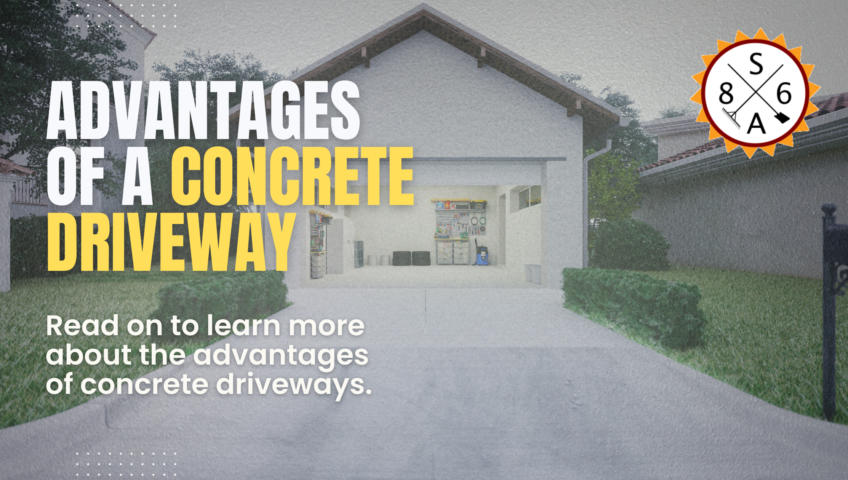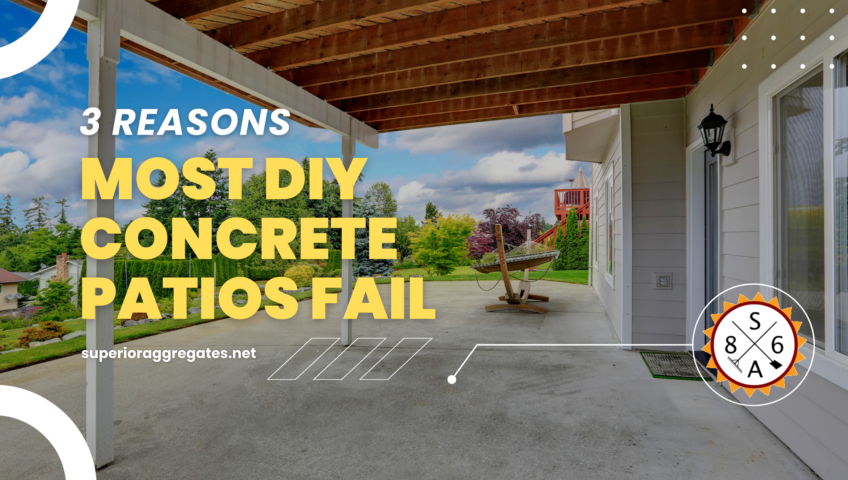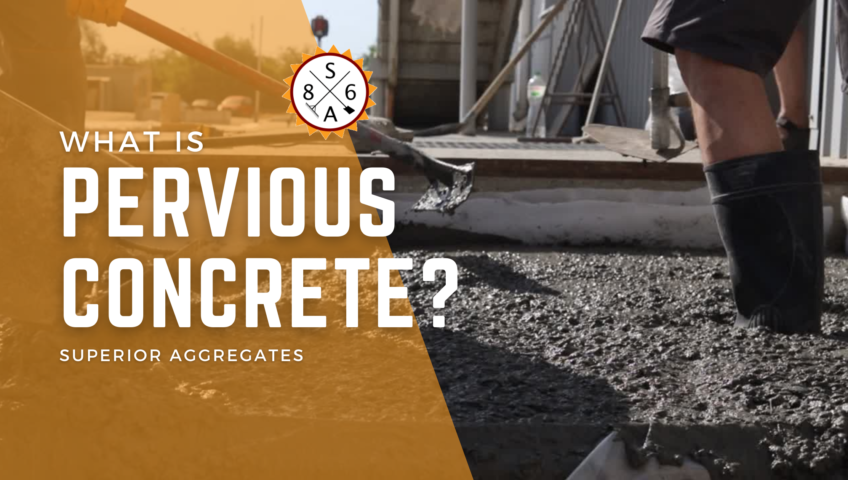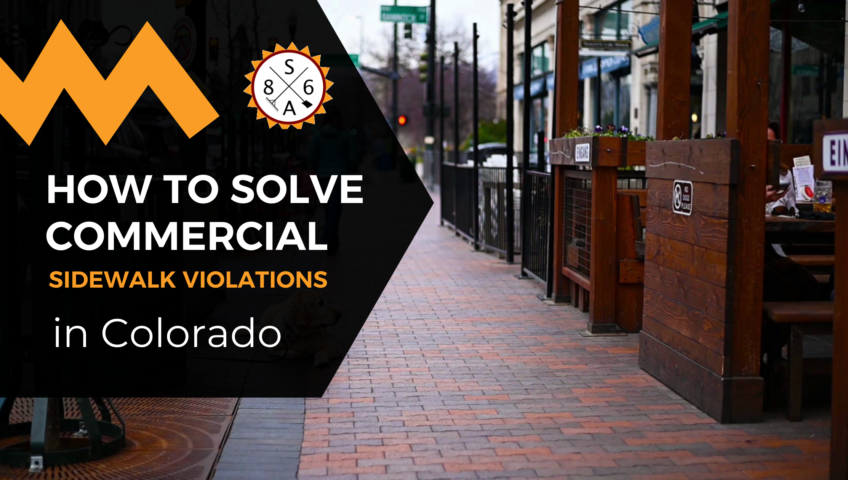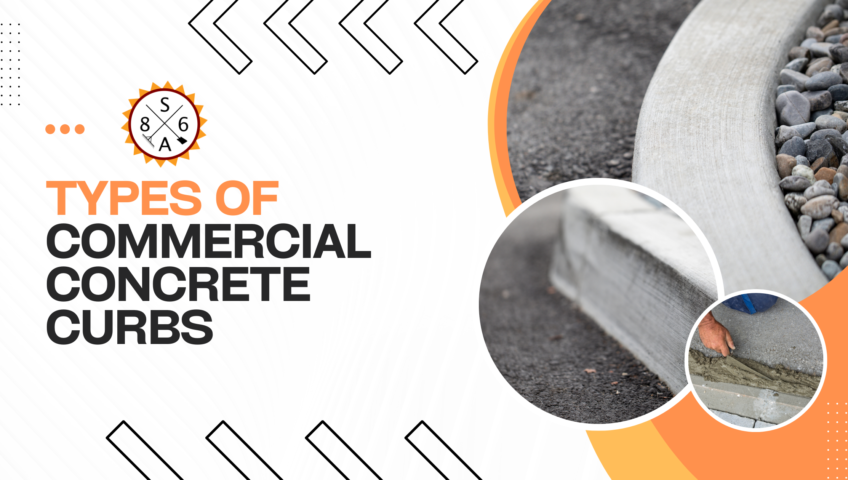
Types of Commercial Concrete Curbs
There are three main types of commercial concrete curbs: barrier curbs, decorative curbs, and mountable curbs. These curbs all serve very different purposes, so it is important to know the differences if you need curbs for your business. Creating beautiful and properly shaped curbs isn’t easy, so it’s best to go with a concrete company that has plenty of experience with making curbs. Read on to learn more about the different types of commercial concrete curbs.
Barrier Curbs
Barrier curbs are intended to keep people and vehicles out of a certain area. They are intended to be entirely functional, not decorative. Barrier curbs are often found at the edges of streets, where they keep vehicles from straying onto the sidewalk. They are also used to surround parking lots for the same purpose. In addition to providing a barrier to people and vehicles, these curbs also keep water from flowing out of a street. Instead, the water is directed into a drain.
Sometimes barrier curbs are placed between parking spaces in a lot. This can make it easier for drivers to park their vehicles. It also prevents one vehicle from parking across two spaces, which is important if your lot is often very full.
Decorative Curbs
Decorative curbs are intended to be beautiful, though they do serve a purpose. This type of curb is also known as a mower curb. This is because these curbs are often used to prevent lawnmowers from cutting down fragile plants like flowers and ornamentals. Not only will decorative curbs prevent lawnmowers from damaging fragile plants, but these curbs will also keep pedestrians from wandering into flower beds and the like. If you have a sidewalk that cuts through your business’s landscaping, you should have decorative curbs installed along both sides.
Decorative curbs are often colored and stamped with a design. These curbs can also have unique shapes. Decorative curbs are a great way to increase the beauty of your business’s grounds while also protecting the landscaping. If you are planning to get decorative curbs for your business, make sure to look at pictures of decorative curbs so that you can get a good idea of what is possible.
Mountable Curbs
Mountable curbs are designed to let people or vehicles pass over them. These curbs can be found at the edges of sidewalks where they cross a street. In this situation, mountable curbs are intended to let people pushing strollers or walkers easily transition from the sidewalk to the asphalt when crossing a street. Mountable curbs also give people in wheelchairs easy access to the street. In fact, mountable curbs are required by many jurisdictions to ensure equal access for people with disabilities.
Mountable curbs can also be found at the entrances of parking lots. They divide the parking lot from the street while still letting vehicles pass over them without a jolt. This is why mountable curbs slope downwards instead of upwards like other types of curbs.
Finding the Right Concrete Company
It can be tricky to create concrete curbs that not only look good but also work properly. If you need curbs for your business, find a concrete company that has extensive experience creating curbs. Make sure to take a look at examples of their past work so you can ensure that they are capable of creating high-quality commercial concrete curbs. It’s also a good idea to get an estimate so you have a good idea of how much the work will cost.
There are three main types of commercial concrete curbs: barrier curbs, decorative curbs, and mountable curbs. These curbs all serve very different purposes, so it is important to know the differences if you need curbs for your business. Creating beautiful and properly shaped curbs isn’t easy, so it’s best to go with a concrete company that has plenty of experience with making curbs. Read on to learn more about the different types of commercial concrete curbs.
Barrier Curbs
Barrier curbs are intended to keep people and vehicles out of a certain area. They are intended to be entirely functional, not decorative. Barrier curbs are often found at the edges of streets, where they keep vehicles from straying onto the sidewalk. They are also used to surround parking lots for the same purpose. In addition to providing a barrier to people and vehicles, these curbs also keep water from flowing out of a street. Instead, the water is directed into a drain.
Sometimes barrier curbs are placed between parking spaces in a lot. This can make it easier for drivers to park their vehicles. It also prevents one vehicle from parking across two spaces, which is important if your lot is often very full.
Decorative Curbs
Decorative curbs are intended to be beautiful, though they do serve a purpose. This type of curb is also known as a mower curb. This is because these curbs are often used to prevent lawnmowers from cutting down fragile plants like flowers and ornamentals. Not only will decorative curbs prevent lawnmowers from damaging fragile plants, but these curbs will also keep pedestrians from wandering into flower beds and the like. If you have a sidewalk that cuts through your business’s landscaping, you should have decorative curbs installed along both sides.
Decorative curbs are often colored and stamped with a design. These curbs can also have unique shapes. Decorative curbs are a great way to increase the beauty of your business’s grounds while also protecting the landscaping. If you are planning to get decorative curbs for your business, make sure to look at pictures of decorative curbs so that you can get a good idea of what is possible.
Mountable Curbs
Mountable curbs are designed to let people or vehicles pass over them. These curbs can be found at the edges of sidewalks where they cross a street. In this situation, mountable curbs are intended to let people pushing strollers or walkers easily transition from the sidewalk to the asphalt when crossing a street. Mountable curbs also give people in wheelchairs easy access to the street. In fact, mountable curbs are required by many jurisdictions to ensure equal access for people with disabilities.
Mountable curbs can also be found at the entrances of parking lots. They divide the parking lot from the street while still letting vehicles pass over them without a jolt. This is why mountable curbs slope downwards instead of upwards like other types of curbs.
Finding the Right Concrete Company
It can be tricky to create concrete curbs that not only look good but also work properly. If you need curbs for your business, find a concrete company that has extensive experience creating curbs. Make sure to take a look at examples of their past work so you can ensure that they are capable of creating high-quality commercial concrete curbs. It’s also a good idea to get an estimate so you have a good idea of how much the work will cost.

